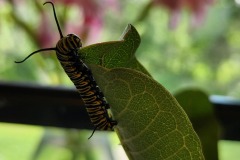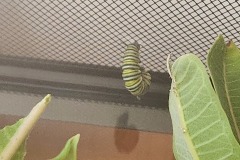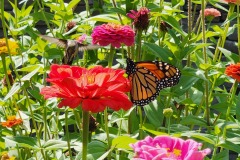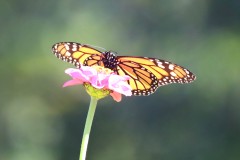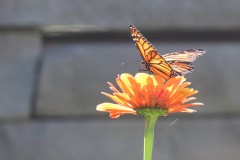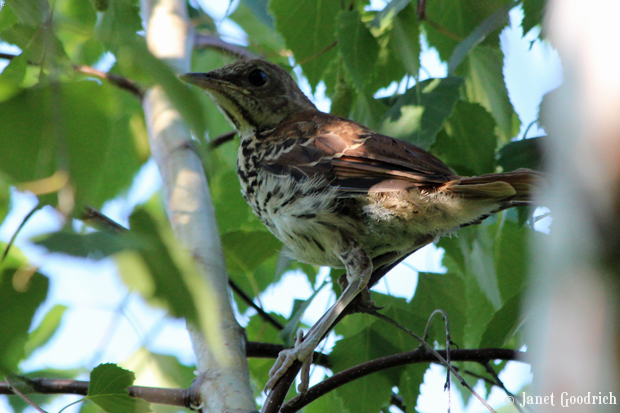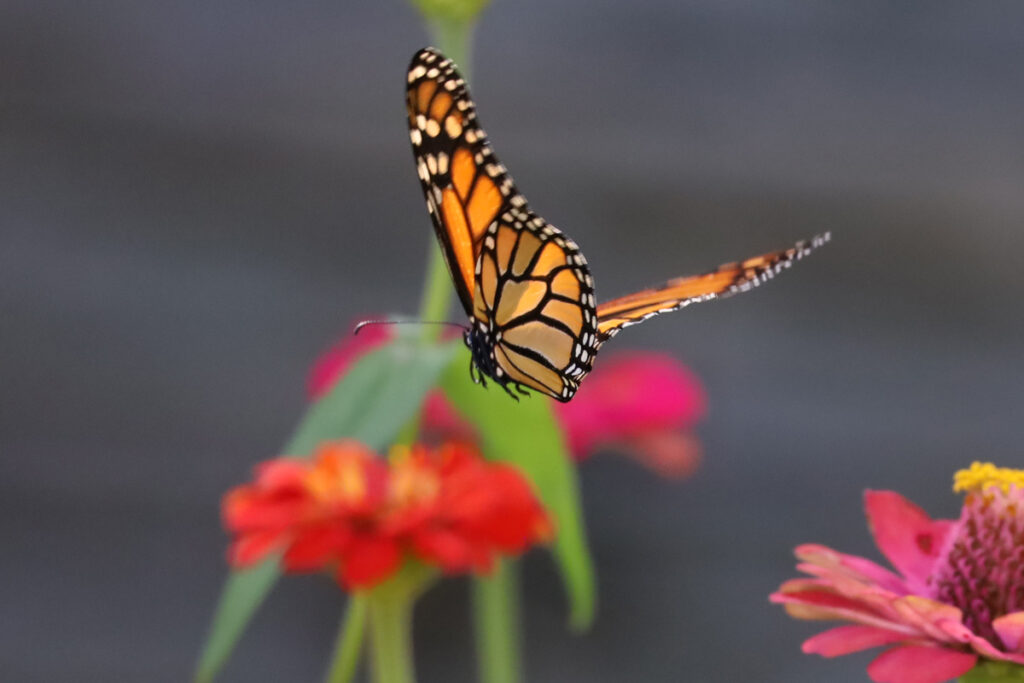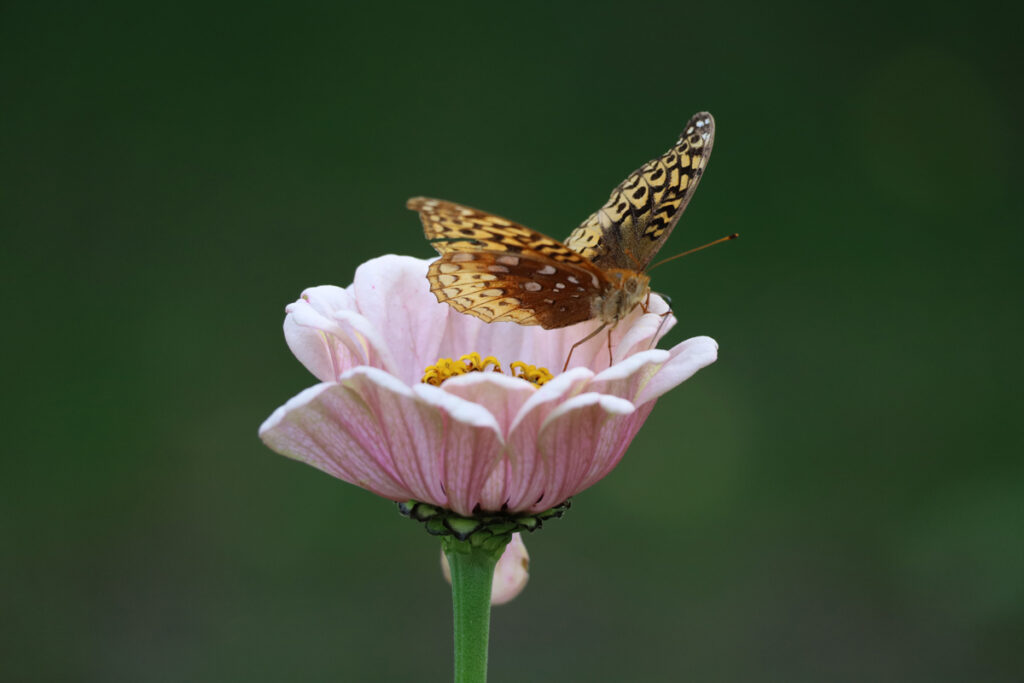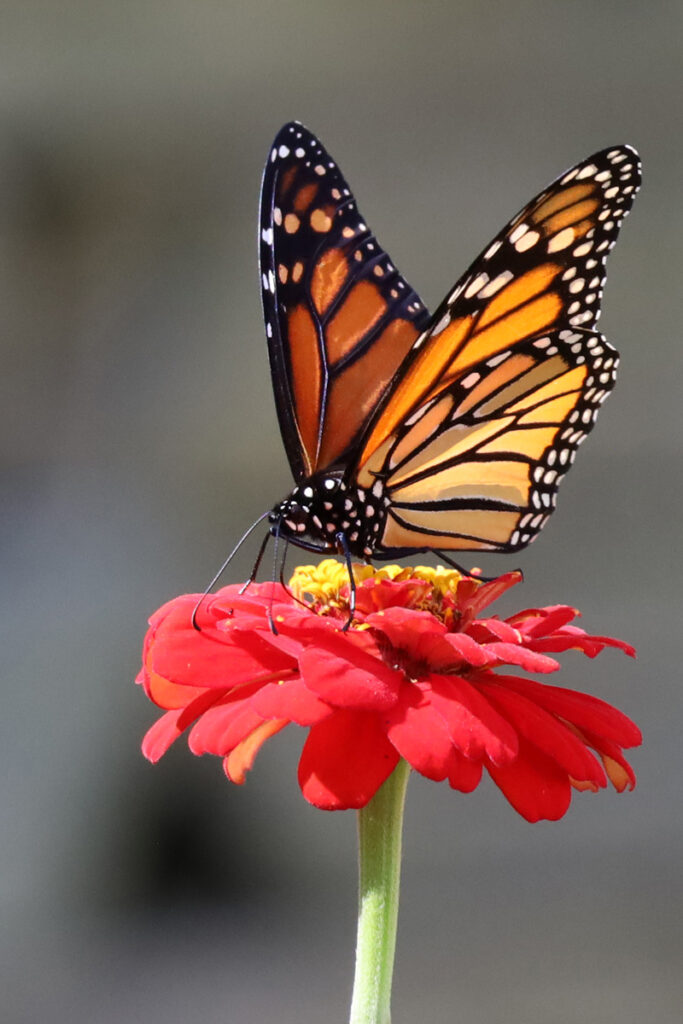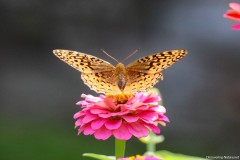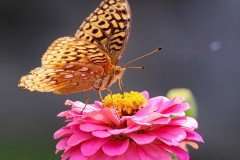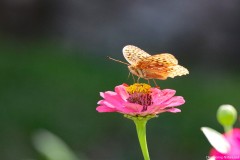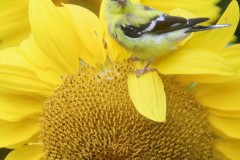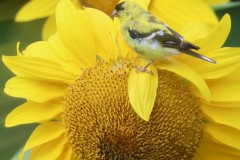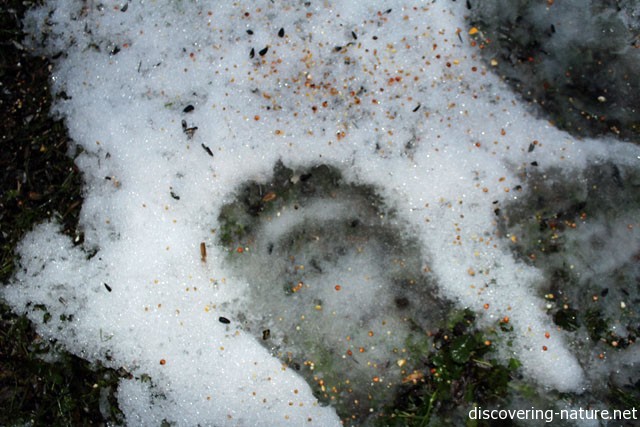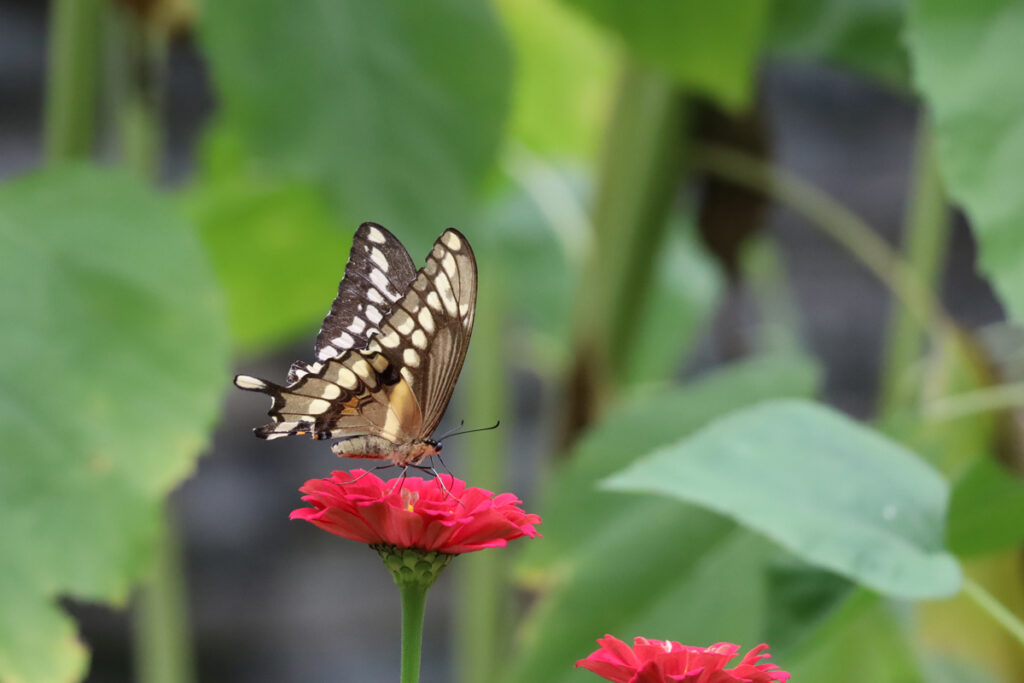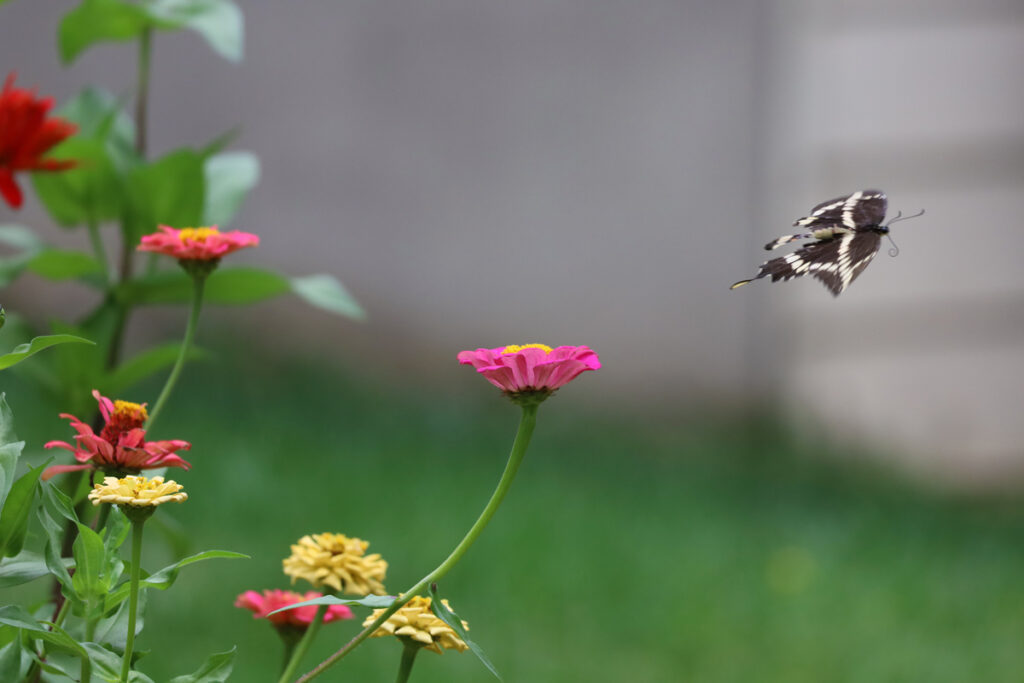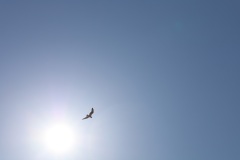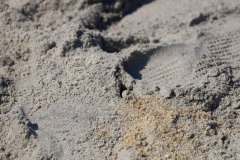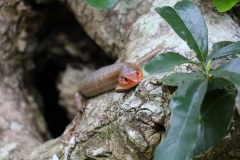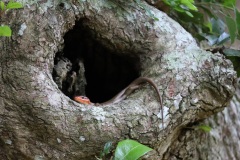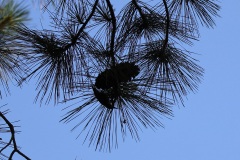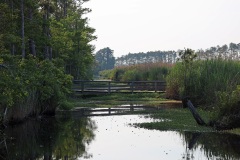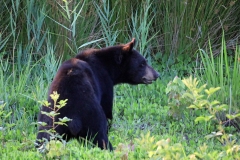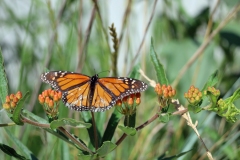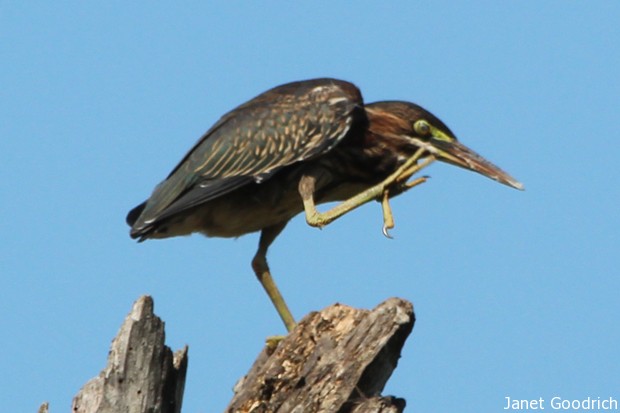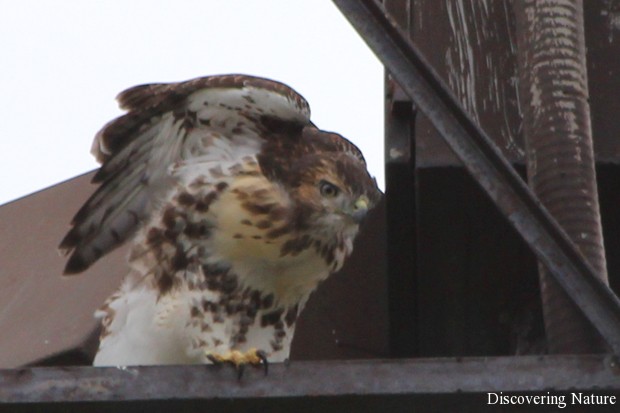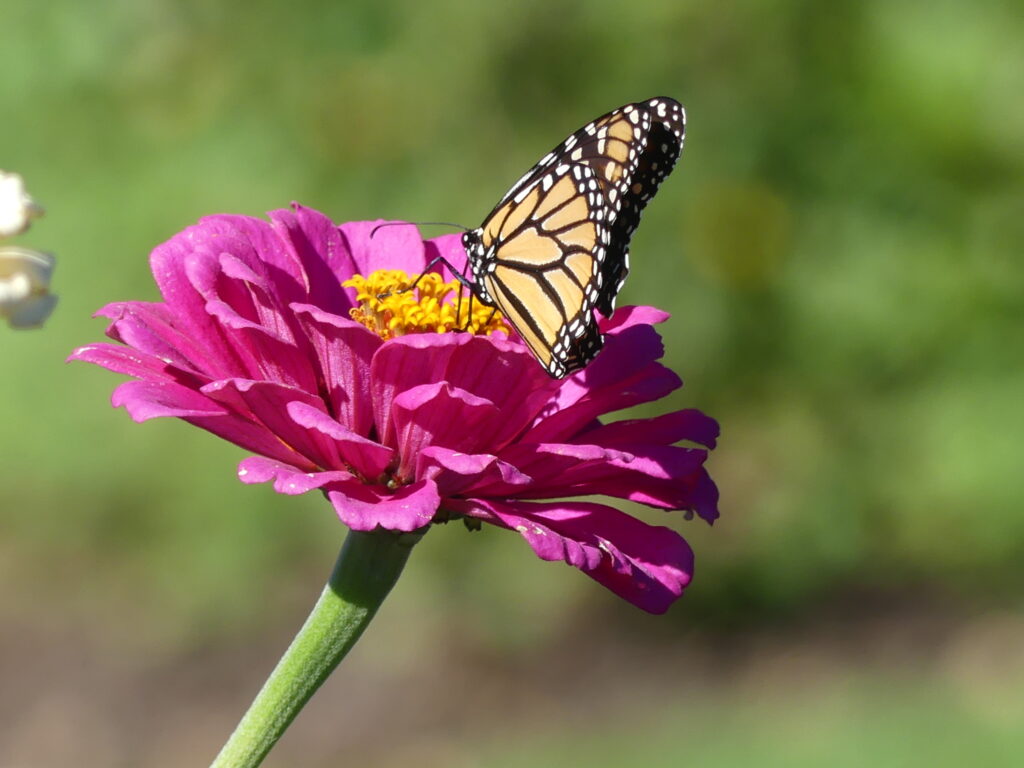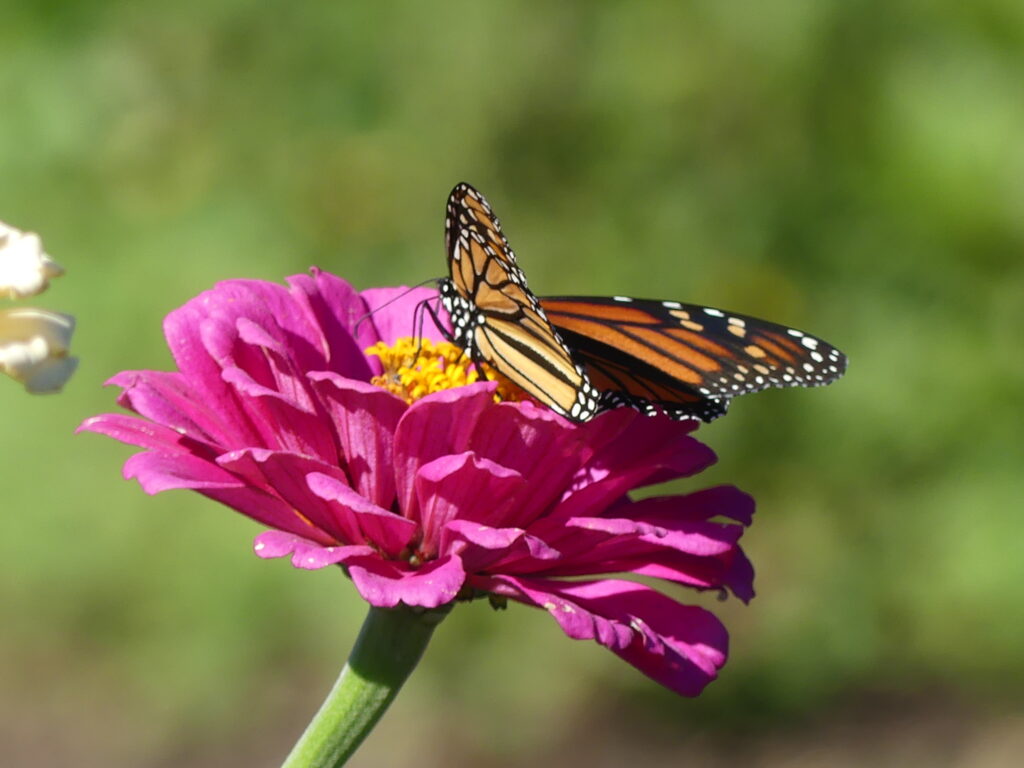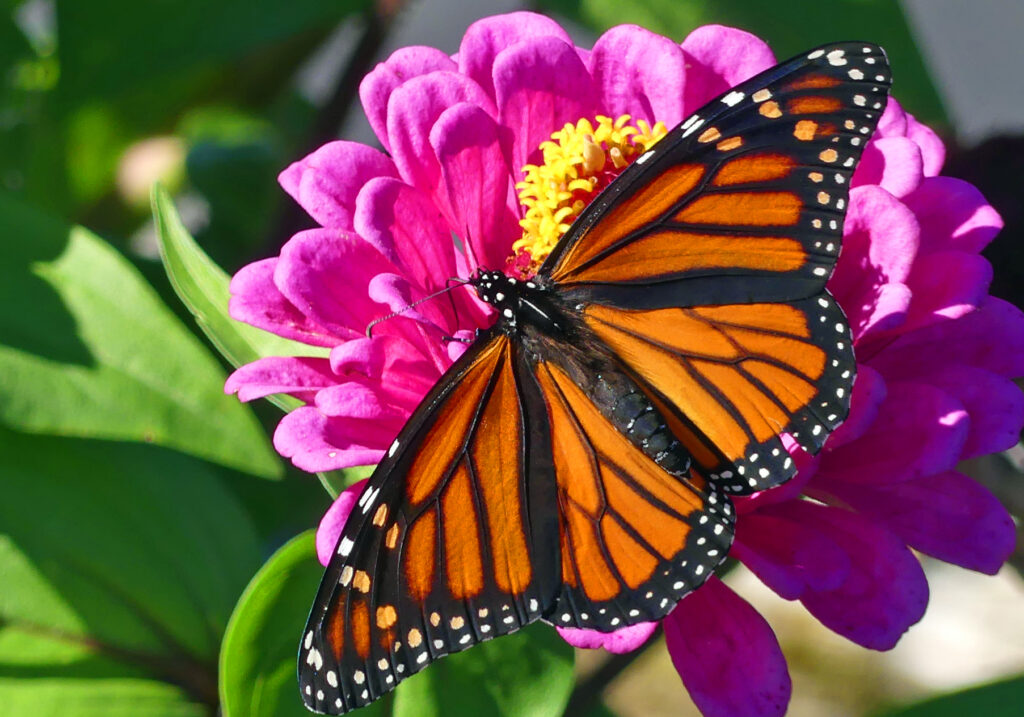Butterflies & Moths
-
A first
We found two caterpillars quite late this year, so we brought them home. This one is Jester, who emerged in the wee hours of September 26. As a caterpillar, Jester was quite plump, and she trudged around the aquarium for a long time before finally forming a chrysalis on a milkweed leaf instead of on the aquarium lid. We taped the leaf up after it dried out and were relieved that the butterfly got off to a good start on a warm day.
The other was a noticeably small caterpillar we dubbed Maverick. Maverick was on a milkweed plant with two spider sacs and a large spider, so by bringing him home we thought we increased his chances. But he formed a chrysalis earlier than expected, while he was still small, and the chrysalis was only about 2/3 the size of a typical one.
It seemed to develop normally, and the butterfly seemed fully developed, but it never emerged. This is a first, and it was a sad way to end the season. The metamorphosis is such an amazing process, and a good metaphor for change and growth. This one was essentially stillborn — seemingly perfect, yet the process didn’t complete.
My daughter helped me remove it from the aquarium lid, and we hung it, by a thread tied around the little black hanger on top, from a bush outside. I couldn’t throw it out. “It would be a great place to emerge,” she remarked. Indeed it would. If only.
-
Progress Report
We’ve found just 4 monarch caterpillars this year. Two have successfully metamorphosed into butterflies; two are still chrysalises in our aquarium.
Here are some glimpses of the process.
Emerging Monarch
Prepping for Takeoff
The Great Outdoors
-
Monarch Season
We’re going to look for some monarchs to see through the caterpillar –> chrysalis –> butterfly cycle again this year. I’ve seen several articles recently about the butterflies being classed as officially endangered. It’s been a number of years since I did this, and I’d like to help make sure at least a few make it through the earthbound phase of their lives.
This video is from 2012. Before that year, when my daughters and I were immersed in nature study, I assumed caterpillars always formed the chrysalis from outside; in truth it’s a much more uncomfortable looking process of enduring its emergence from within. It’s a good metaphor for other kinds of important change — and one I hope to be able to observe again this year. Maybe I can make another video… though I treasure this one, with its shifting reflections of young faces in the aquarium glass.
Music: Liz Story, “Welcome Home”
-
Great Spangled Fritillary
-
Monarch
-
Garden Sightings
-
Giant Swallowtail
These are, I’ve read, the largest butterflies in North America. It takes around 7 weeks to move through egg, caterpillar, and chrysalis stages. The culminating masterpiece, a gorgeous adult butterfly, only lives 6-14 days.
Looking at the torn wings of this one feeding in my zinnias, I sure wish they could regenerate and last longer.
-
Outer Banks in June
I thought I’d posted these earlier in the summer. Better late than never! These are a few select pictures of a great experience at the beach.
To scroll through the photos manually, click on a photo and move forward or back in the sequence using the arrows.
-
New Monarch
-
House Guest
My daughter was riding her bike one day early last August when this plump caterpillar, perhaps 3 inches long, brought her to a screeching halt in our driveway. We all ran over to examine it, but we couldn’t help noticing the number of watchful, hungry birds around as well. We moved it to the grass, but it was still too big to maintain a low profile, and it seemed to be in a big hurry.
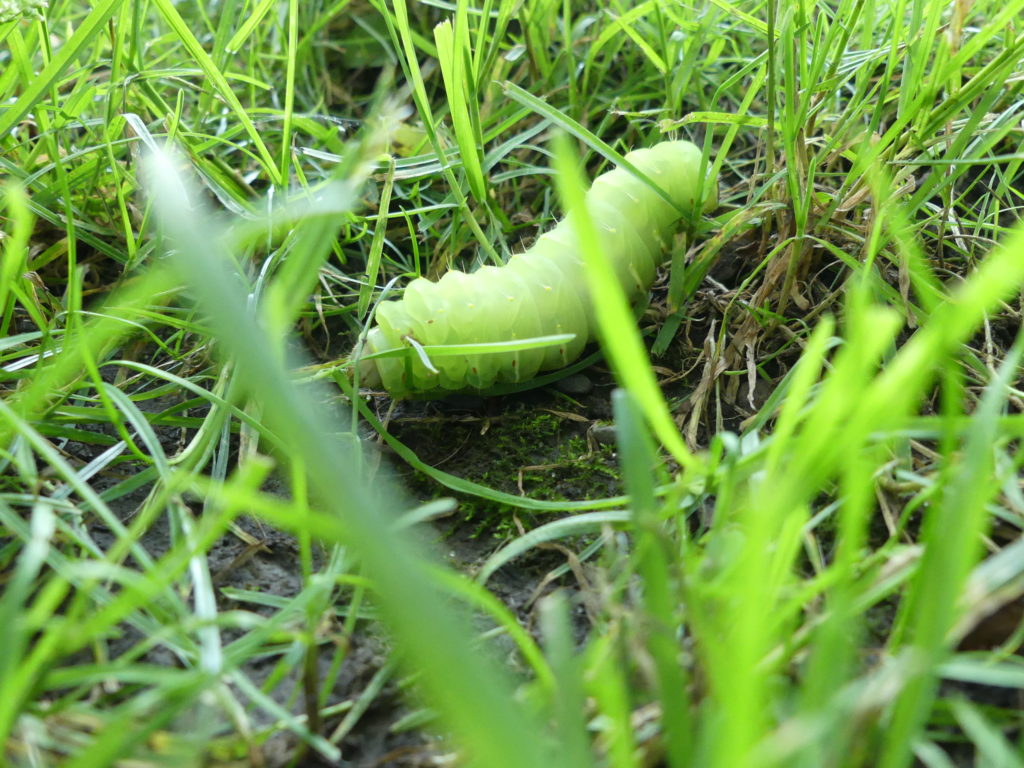
I dashed inside and hurriedly scanned our caterpillar book, delighted to discover it was a polyphemus moth caterpillar. The book noted that this was a great caterpillar to bring inside to observe the metamorphosis, so we got the aquarium and put it inside with some walnut and hickory leaves, which the book gave as the caterpillar’s preferred food.
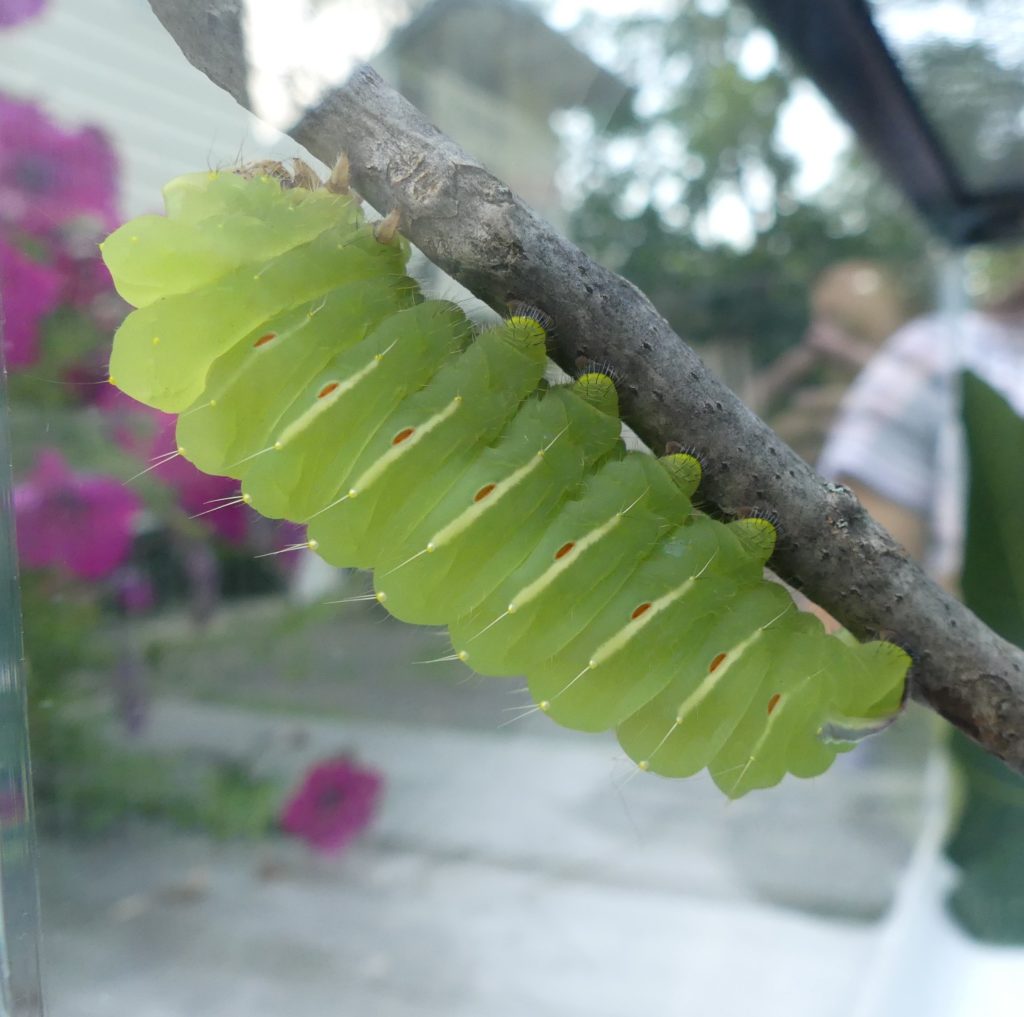
By the next morning, it was spinning its cocoon in the corner of the aquarium. “Great,” I thought. “In two weeks, we’ll have a beautiful moth to let go.”
We had a polyphemus moth stay with us for a few hours once before, so naturally we thought of ourselves as experts.
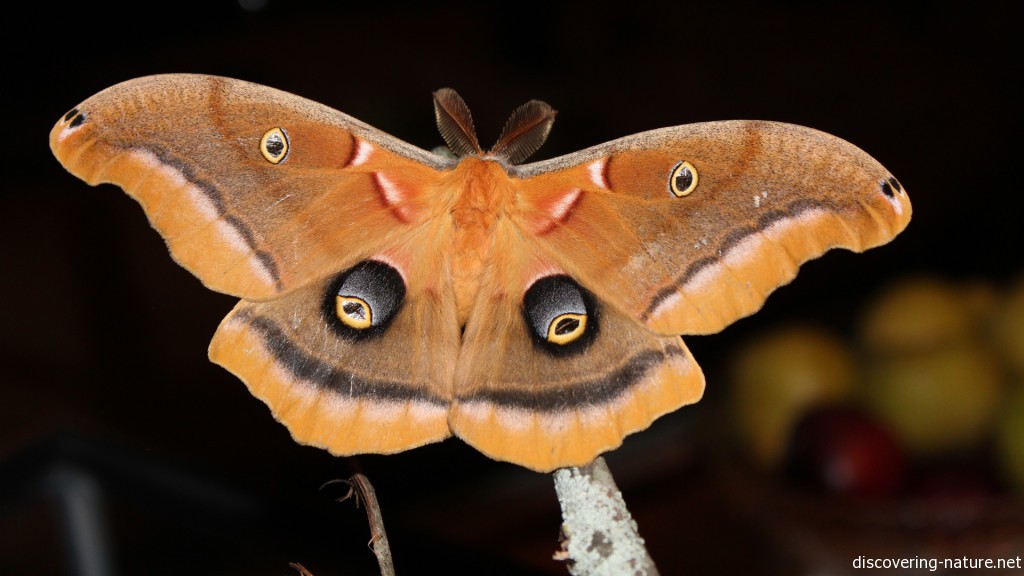
But… did I mention that I “hurriedly scanned” the caterpillar book? Therein lies the joke. I failed to notice with sufficient attention that the late-summer caterpillar overwinters in its cocoon.
So since August, Polyphemus has been our house guest. There on the bookcase, he’s slept through Halloween, Thanksgiving, Christmas, both daughters’ birthdays, Easter, and the state’s shutdown due to COVID-19. Unbeknownst to him (such a long-term visitor deserves a better pronoun than “it”), he has shared in a large portion of family life, all without being the least bit demanding or objectionable.
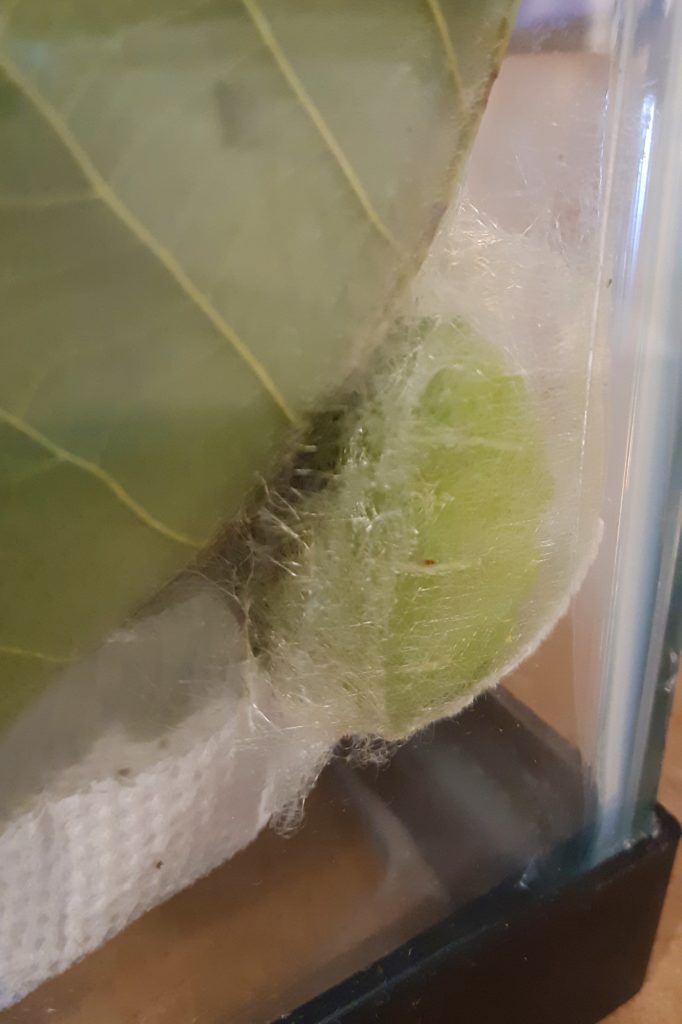
And one of these days, we hope, he will emerge to show off his glorious beauty for an incredibly brief winged life.




